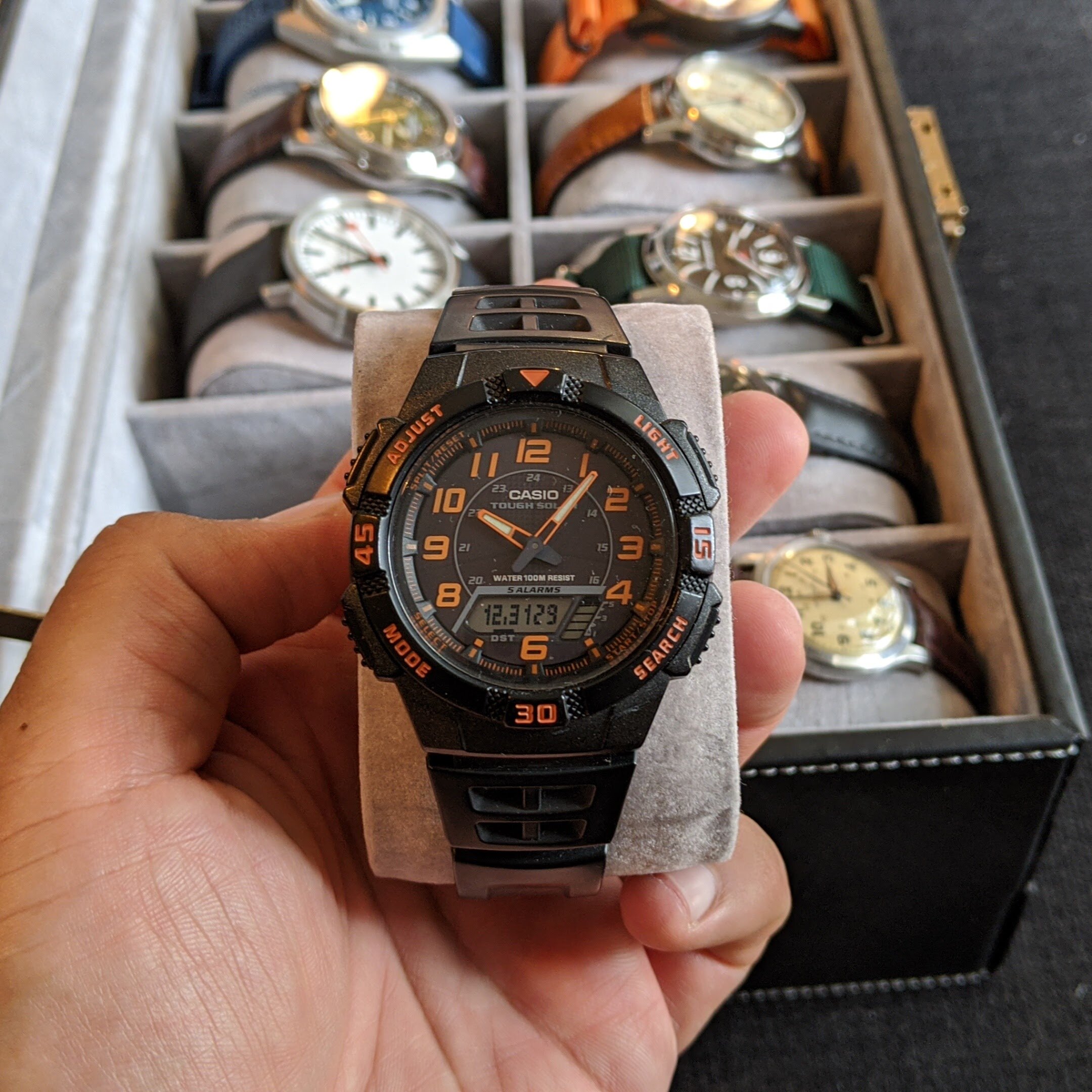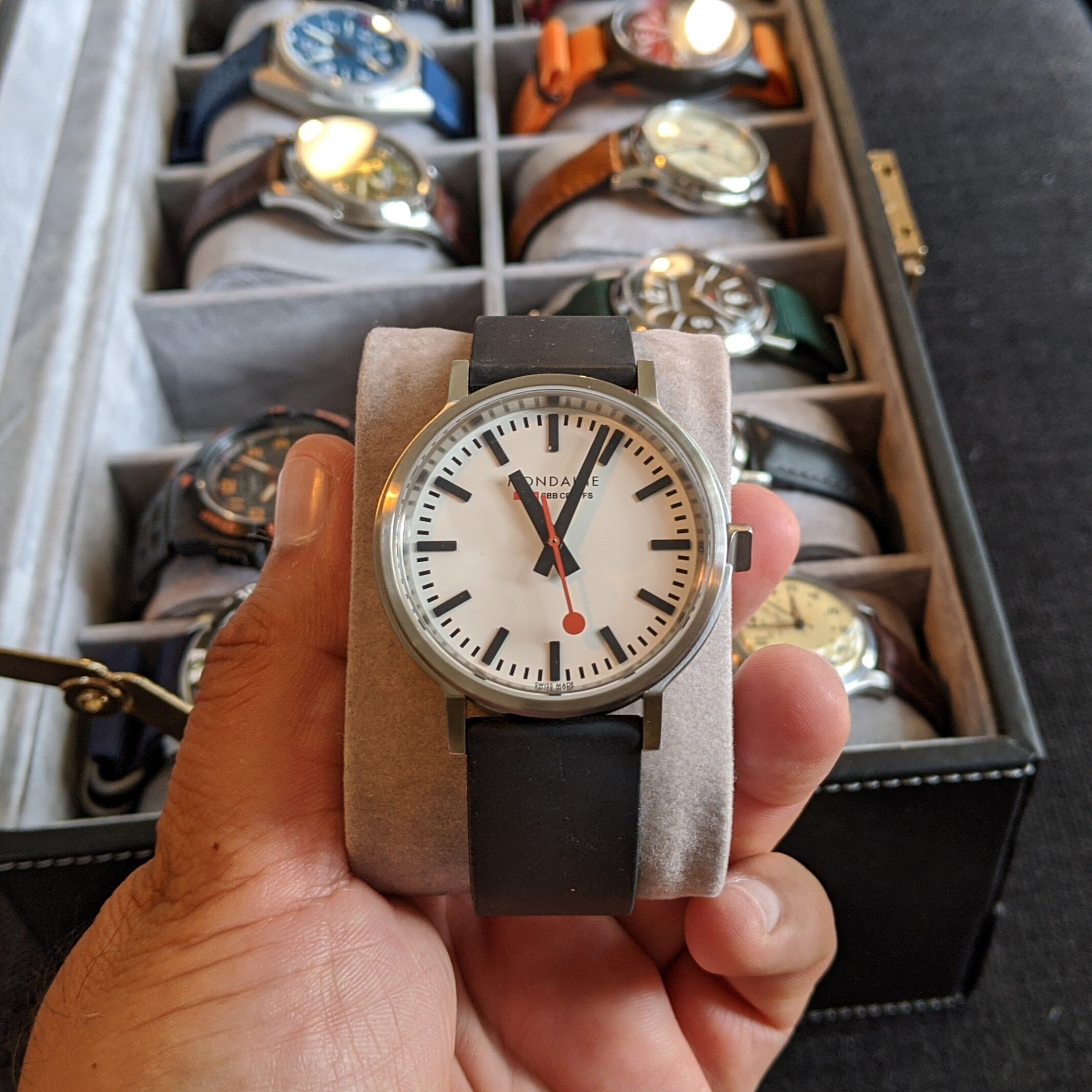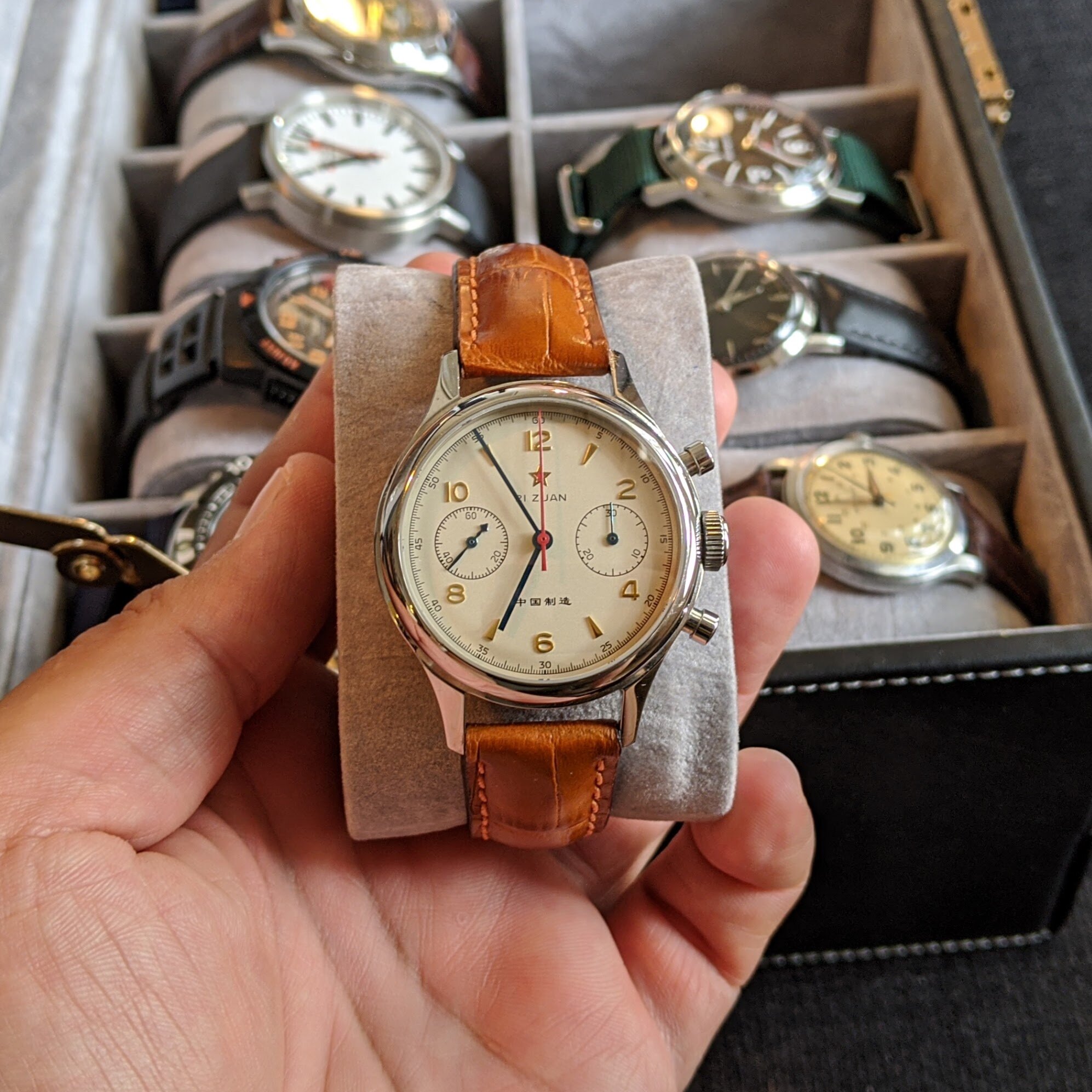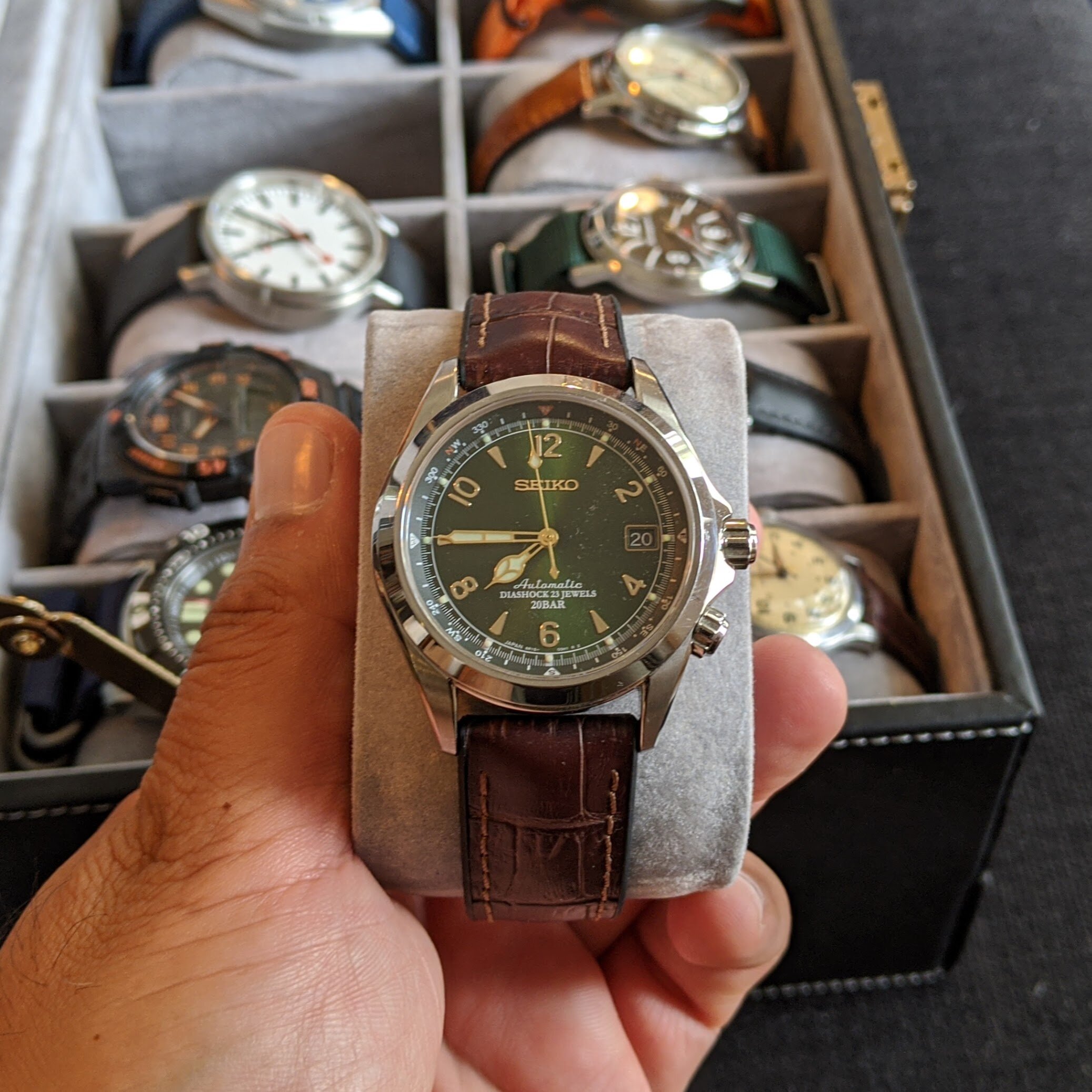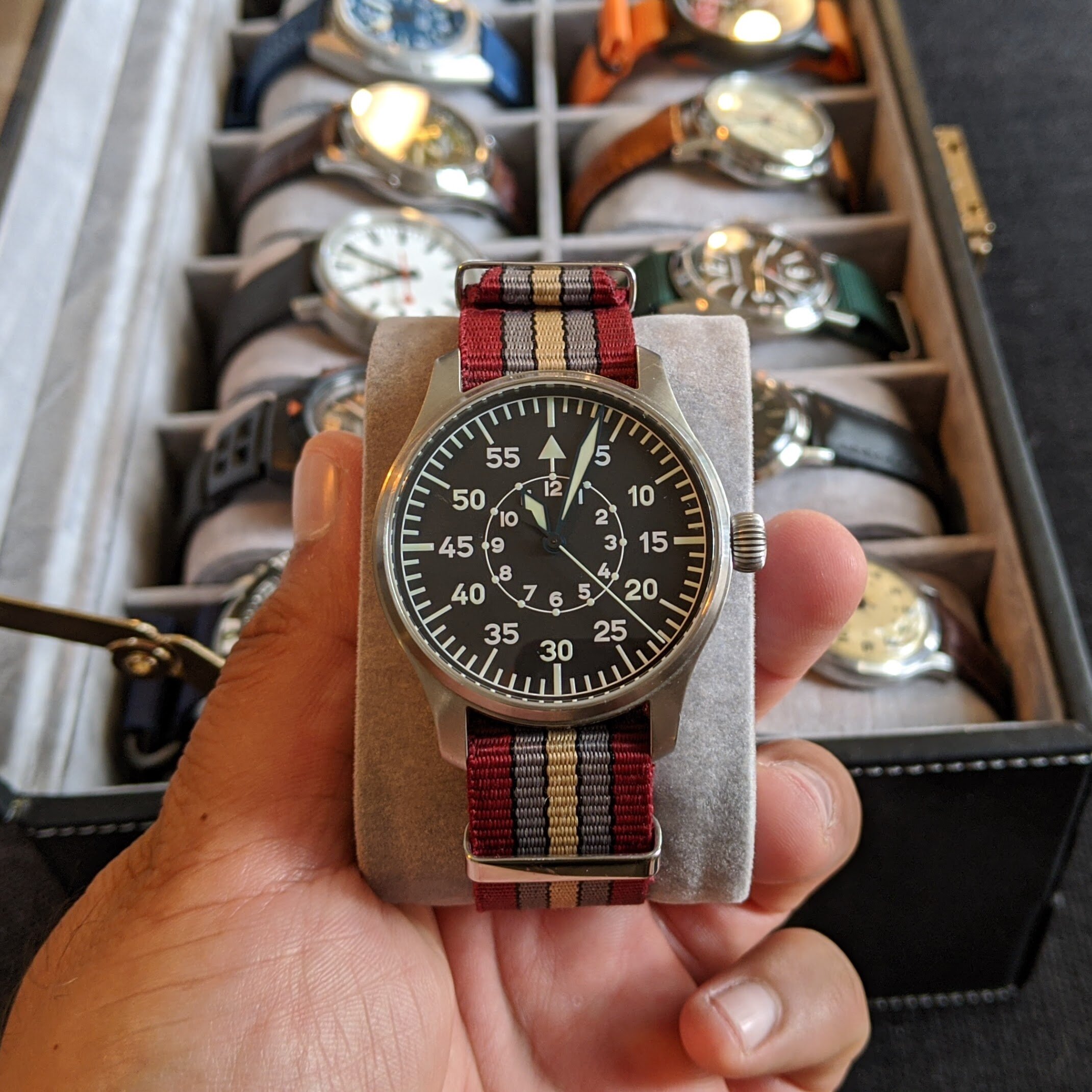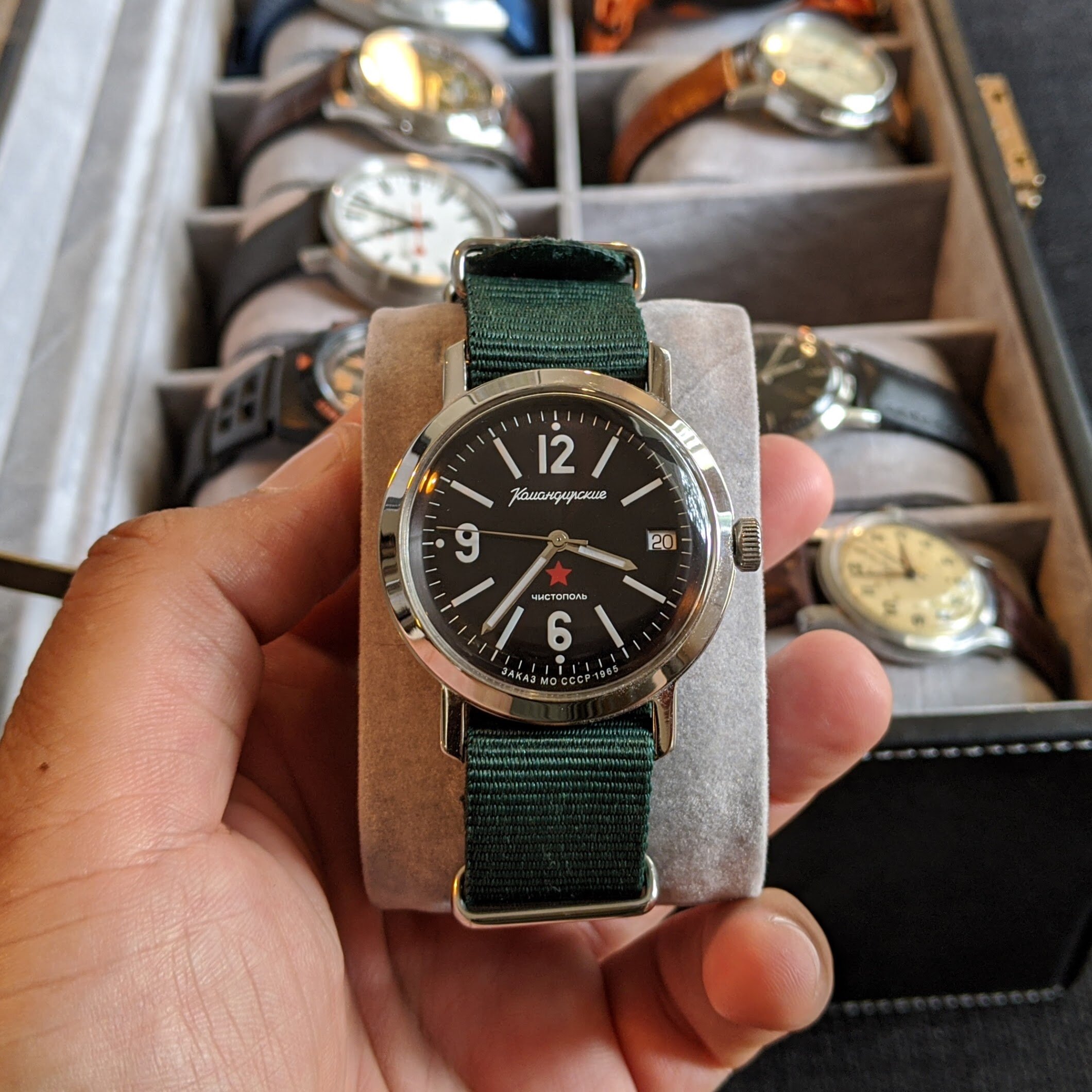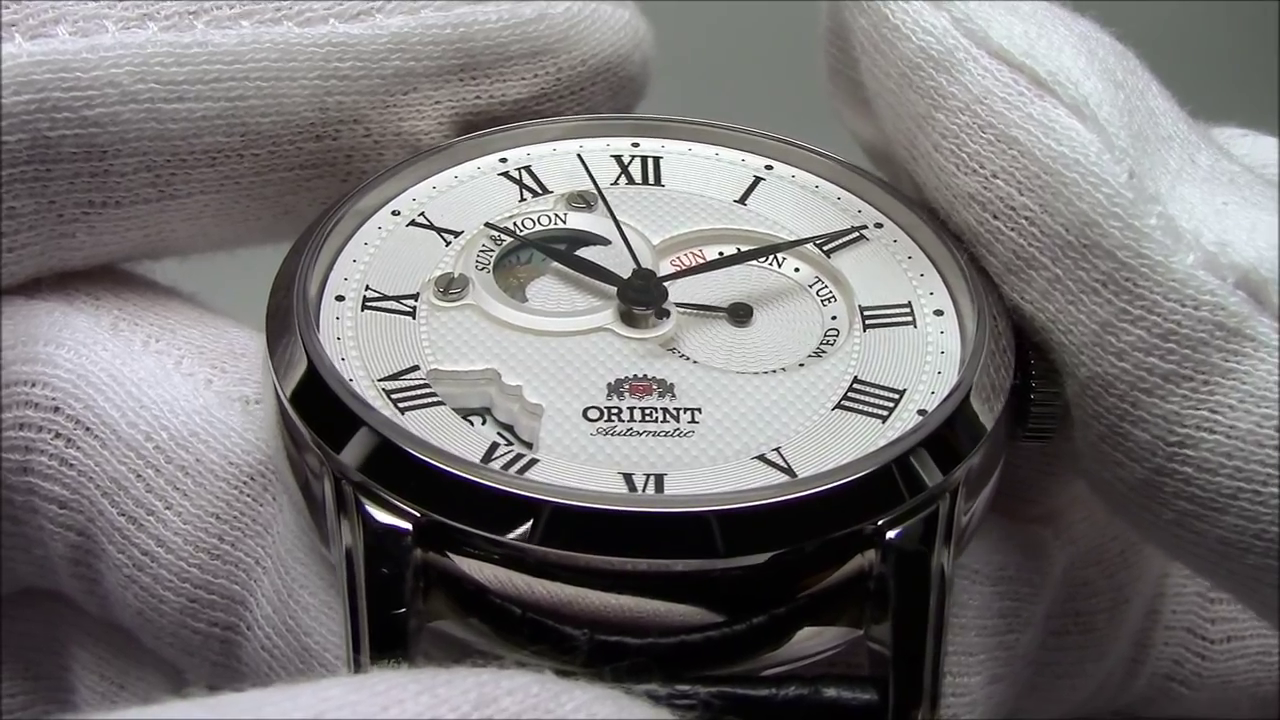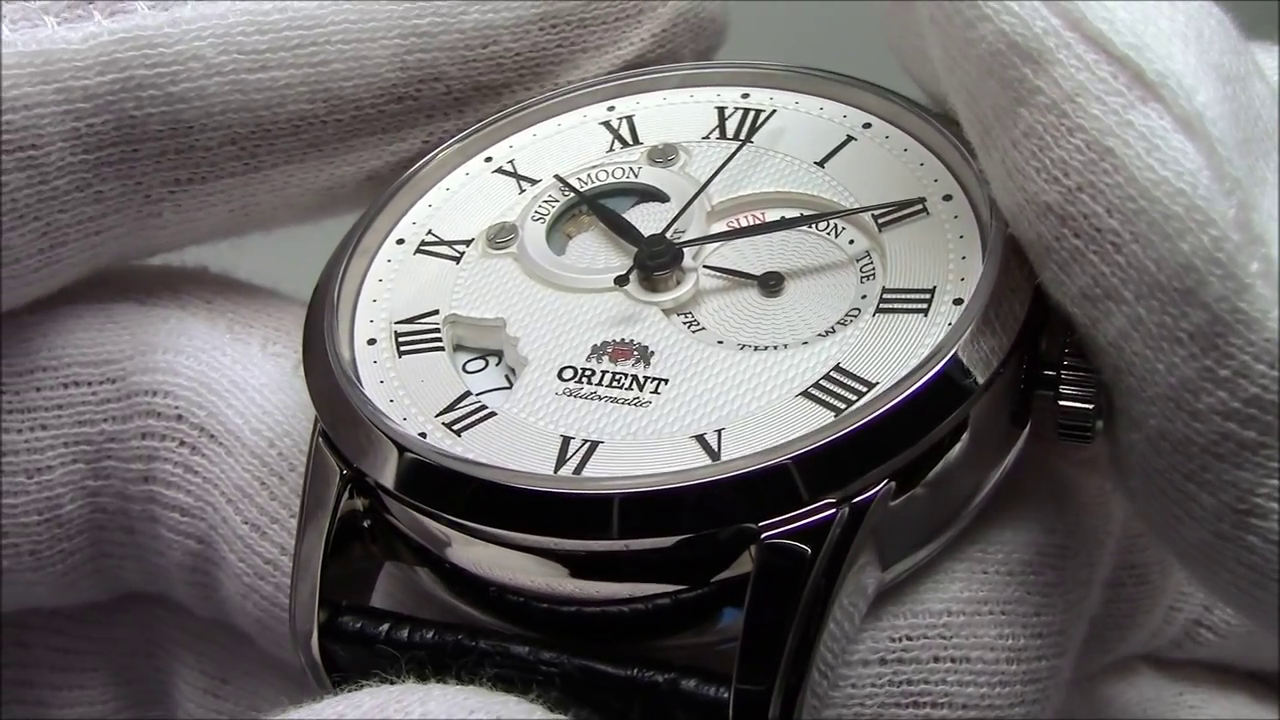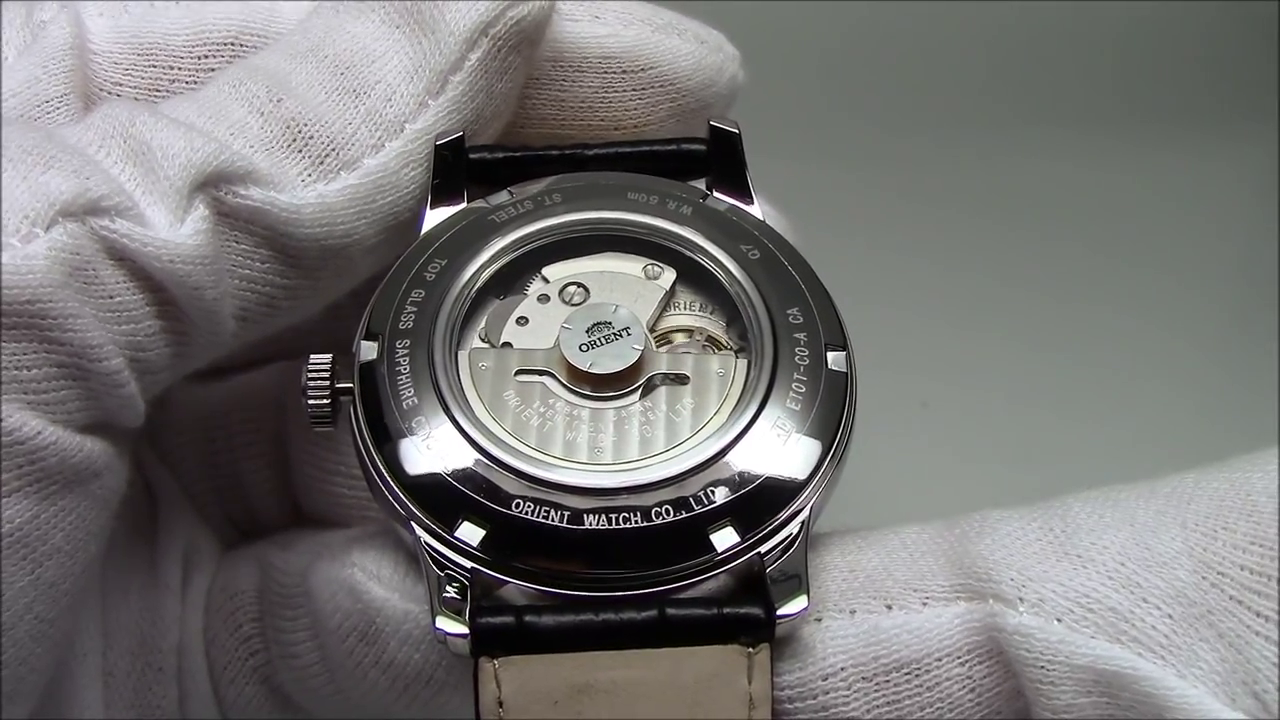The ST1901 is a hand-wound, column-wheel chronograph movement with 21 jewels, shock protection, and a 40-hour power reserve.
To see just how cool this movement is, check out this video from Long Island Watch (the link will start the video from the 08:50 mark).
I really wanted to get this watch, not just because it’s gorgeous and has a fantastic chronograph movement, but also because so much history behind it.
History of the 1963 Airforce chronograph
The 1963 Airforce chronograph is historically important because it was the first chronograph built in China that was issued to air force personnel in the Chinese People’s Liberation Army Air Force.
There are two parts to this story of this watch, one set in Switzerland and one set in China.
In 1960s Switzerland there were three competing chronograph movement manufacturers: Lemania, Valjoux and Venus. Venus made the popular Calibre 175 column (or pillar) wheel chronograph movement that was used in several watches in the 1940s and 50s.
Competition in this space was fierce and Venus needed money to develop newer movements so they first tried to sell their existing Cal.175 machinery and designs to the Soviet Union. The Soviets, however, already had the Strela chronograph movement (a copy of Venus’ Cal.150) which meant they weren’t interested. But the Chinese were.
In the 1960s the Chinese were importing all their chronographs from Switzerland and the Soviet Union. They wanted to remove this dependency so the Ministry of Light Industry kicked-off several projects to develop Chinese-made clocks and watches. 304 was the code given to the project that would develop, test, and source a Chinese-built chronograph wristwatch for air force personnel. (100-series projects were for the navy, 200 for the army, 300 for the air force.)
In 1961 Project 304 assigned the task of developing and producing this air force chronograph to the Tianjin Watch Factory. This was partly because Tianjin had already created a popular watch movement of their own but also because Tianjin (the city) is physically closer to Beijing than, say, Shanghai (and, therefore, the Shanghai Watch Factory).
Tianjin bought the Cal.175 machinery and designs from Venus and then upgraded the original 17-jewel movement to their own 19-jewel ST19 movement. They completed their second round of prototypes in 1963 and, for whatever reason, this is the year that gets added to the watch’s name when collectors outside of China refer to it. Inside of China this watch is named after the project code and is called the ‘304 Airforce chronograph’.
By 1965 these watches had met all the requirements and passed all the Ministry’s tests so an order was placed. In 1966 Tianjin delivered 1,400 of these watches to the air force.
Jump forward to 1990 and the Tianjin Watch Factory was promoted to a national level enterprise. This was followed soon after by the creation of the Tianjin Seagull Corporation in 1992.
(‘Sea-Gull’ was the brand name given to the export version of the ‘DongFeng’, ie ‘East Wind’, watch that Tianjin made in 1965 and started exporting in 1973. This ran on the 100% Chinese designed and manufactured Calibre ST5 movement and was the first watch ever to be exported from China. So it made sense to add the most internationally well-known brand to the name of the new company.)
In 2003 Seagull resurrected Project 304’s movements and, by 2005, had reissued the first batch of commemorative aviation watches. The watch version I have is one of the newest models that runs on the further-upgraded, 21-jewel ST1901 movement and has a sapphire crystal.
Final thoughts
I’ve only had this watch for a couple of days (we celebrated my birthday on the weekend before the actual day) but I’ve worn it pretty much non-stop since then and I can safely say that I love it!
All my other watches have black dials so I wasn’t sure how I’d feel about a watch with a lighter dial. Fortunately, this watch is gorgeous and I think it looks nice on me. The awesome RIOS 1931 Bright Brown leather strap that came bundled with it from Poljot24.de adds a lot to its overall aesthetic, too.
Sure the watch doesn’t have a day-date complication or any lume anywhere (which makes it more like a dress watch, really). But the fact that I can instantly start the chronograph with a push of a single button more than makes up for anything that’s ‘missing’ from a near-authentic reissue of a 1960s watch.
I’m also loving wearing smaller watches for a change. I still love my 47mm dive watch, and have worn huge Casio G-Shocks and ProTreks for much of my life, but smaller watches work surprisingly well on my 7¾-inch wrist. I think my next watch will be a vintage watch from the 60s or 70s so this small-watch trend is probably going to continue for a while!
Let me end then by saying a HUGE thank-you to Nadia and all the awesome friends who contributed to this watch! Mechanical watches are very much a luxury item for me and it’s only (a) this year and (b) with your help that I can actually afford to own any of them. So thank you for indulging me and for not looking at me too side-eyed every time you hear I’ve bought yet another watch :)
Further reading
If you’re interested in buying this watch or want to find out (much) more about it – particularly its history and the history of its movement – here’s where you should go:



